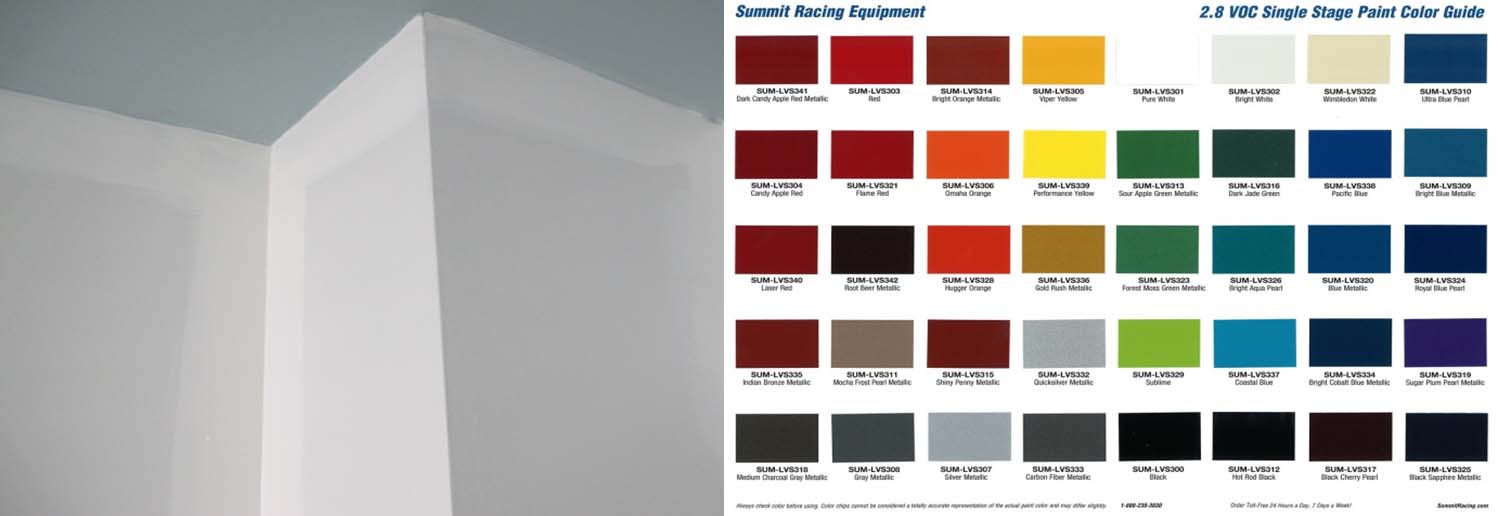THE IMPORTANCE OF FINISHING TOUCHES
Beautifully painted walls don’t stay that way forever. The need for touch-ups on painted interior walls is something to think about in advance. Not only can you avoid headaches by choosing a type of paint that is easy to work with when small repairs are needed, you should be careful to save some of the original paint for touch-ups later on.

Touch-up Mistakes to Avoid
- Same colour, wrong shade. White paint comes in literally hundreds of shades, and touching up the finish properly requires choosing the same shade of paint as was originally painted on the wall.
- Flashing. Professionals use the term “flashing” to describe the variation in the finish which occurs when retouching paint that is shiny or old. Looking straight at a wall, flashing may not be obvious. But when you view the surface from the side, imperfections are visible where light is reflected. Common occurrences of flashing include when a shiny paint finish is applied on patches of bare wall. Other steps are required for the finish to look right, including using repair spackle and latex primer prior to applying a finish of shiny paint.
- Covering stains in a way that produces bleed-through. Not all touch-ups should be handled in the same way. Stains such as cigarette smoke, ink, and water should be sealed before applying fresh paint. Block the stains with a stain-blocking oil primer or a shellac-based sealer.
The amount of trouble you have addressing the need for touch-ups on wall interiors is mostly determined by the type of paint you use on the original paint job. The following is information about the different types of paint, including how well they can be touched up.
Flat / Matte Paint
Matte paint is the most common type of finish used on interior walls. There is no sheen to the finish, and matte paint is ideal for older houses which have imperfections. This type of finish is difficult to clean, which is one reason it requires frequently touching up. The good news is that flat paint is easy to touch up. Matte paint is not recommended for bathrooms and kitchens, but it is ideal for living room walls, ceilings, bedrooms, and walls which have many imperfections.
An Eggshell Finish
An eggshell finish has low sheen and is highly washable. Many homeowners prefer an eggshell finish over satin because it does a better job of hiding imperfections. Living rooms and bedrooms are perfect for an eggshell finish, but it’s not a good choice for hallways and other high-traffic areas. This delicate finish is easily marred, but touch-ups are easy.
A Satin Finish
A satin finish produces a warm, pearl-like, silky sheen. This type of finish works well for children’s rooms, laundry rooms, bathrooms, family rooms, and kitchens. A satin finish can withstand scrubbing; but the problem comes with touch-ups, since slight differences in sheen will stand out.
Gloss
Gloss finishes are typically used on trim, mouldings, and woodwork; very rarely is it used on walls, since imperfections are glaringly obvious. This finish is the easiest to clean and the most durable. Gloss is not easy to touch up, however, because any differences in sheen will be apparent.
Semi-Gloss
Semi-gloss paint is resistant to humidity and can withstand chipping, stains, and scuffing. This type of finish is often used in kitchens and bathrooms as well as for mouldings and trim. Semi-gloss is highly scrub-able but a challenge to touch up because of the sheen.
Please do not hesitate to contact us for your next project:
Phone: 020 8935 5159
Email: info@londonbuildingcontractors.uk
